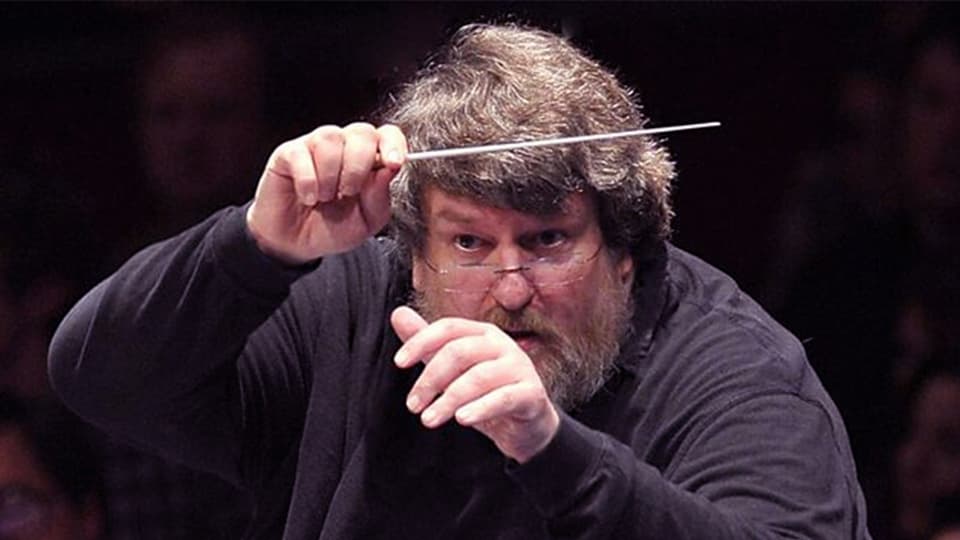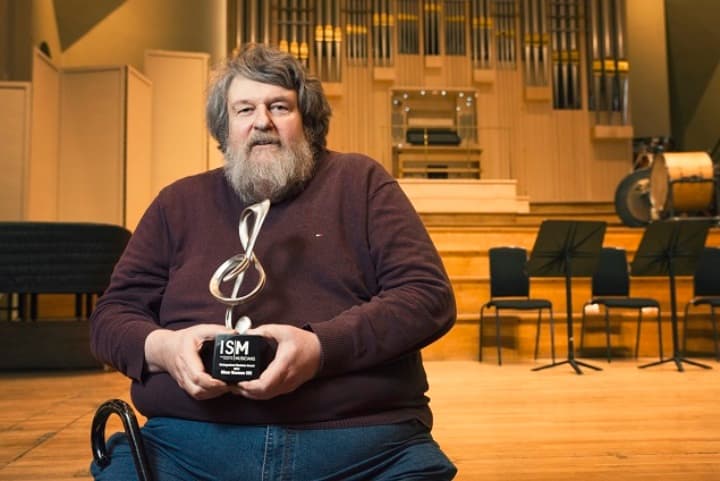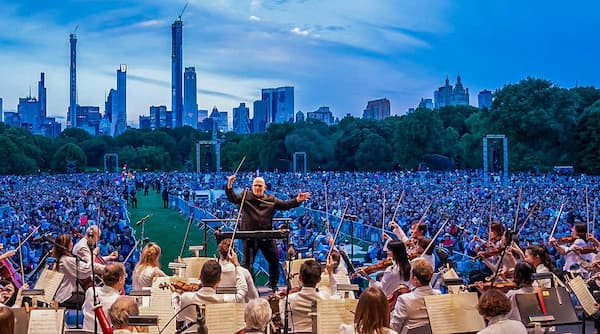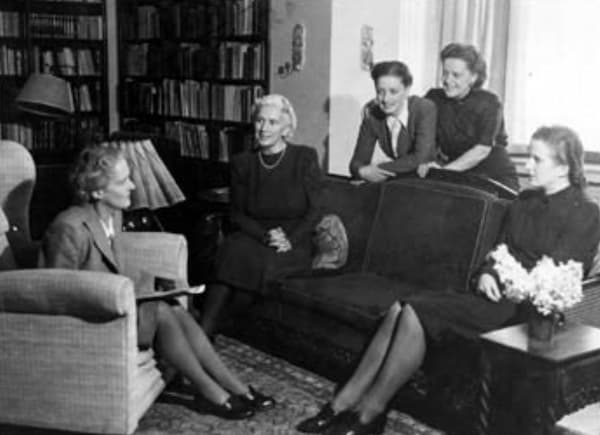Oliver Knussen (1952-2018) is regarded as one of the foremost British composers of recent times. Renowned for music ‘characterised by its crystalline concision, complexity and richness’ (Faber), Knussen wrote works that challenge the ear yet invite us on a journey; to discover music that surprises us, that is full of twists and turns, yet always retains a deep humanity.
With some modern orchestral music, people often downplay challenging material as ‘just an effect’. In other words: if it sounds complicated or is difficult to play, it’s because it’s not meant to be played literally as stated on the page. The composer approximates sounds and the players simply try to get as near as they can to what’s printed on the parts.

Oliver Knussen © British Council
Not so with Knussen. A renowned conductor as well as composer, he was infamous for ears that could identify any discrepancy between the sheet music and the sound made by the musicians. There are stories of him, for example, picking out a flat second trombone note in a (very dissonant) orchestral tutti chord, or insisting on minute adjustments to percussion instruments, requesting several different sizes of temple blocks to pick out just the right tone.
This applied to not just his own music – he was equally fastidious in every genre – but this aural precision is incredibly apparent in his own music.
If you’ve never come across his music, it is some of the most vibrant, beguiling, mysterious, beautiful stuff out there. Below are a few pieces to get you started…
Two Organa (1995)
The Two Organa are a wonderful place to start: two starkly different pieces that explore a huge range of sounds in a short space of time.
The first movement, an orchestration of an earlier piece for music box, is a wonderful fanfare which you may have already seen in the new years playlist. It is incredibly modern and vibrant in character, yet all the harmony comes from the simple scale of C major. It never changes the key, and there are no accidentals at all in the whole movement. Despite its harmonic simplicity, the textures crackle out and always keep the ear guessing.
The second movement is more introspective in mood, but it’s a great introduction to the way Knussen orchestrates. The movement opens with a melody shared between the flutes and strings, a line that splits open as more musical material continues to bloom around it, like an exotic flower slowly opening.
Our ears are aware of several different layers of sound developing simultaneously, and it’s Knussen’s amazing ear for instrumental colour that keeps all these layers aurally distinct yet in constant conversation with each other. Listen out for the end, where church bells are framed by bell-like effects in the other instruments, under which the opening melody glides.
Oliver Knussen: 2 Organa, Op. 27 (London Sinfonietta; Oliver Knussen, cond.)

Oliver Knussen receiving the ISM Distinguished Musician Award © Independent Society of Musicians
Symphony No. 3 (1979)
Knussen’s Symphony No. 3 expands the ideas of layering sound even further. Written for a much larger ensemble than Two Organa, he nevertheless retains a sense of real chamber music in his writing. When I listen to Knussen I get the impression that he sees the orchestra like a painter would see colours on a palette. Very rarely is the whole ensemble employed at the same time; instead, Knussen chooses minutely refined effects and textures and lines them up next to each other with incredible craftsmanship. Even just looking at the opening few bars shows this (you can view the scores for free on Faber’s website): to our ears, we hear a what sounds like a simple shimmering string chord underneath muted trumpets, but the score shows us a wonderfully intricate tapestry of tremolos that build up to the first climax of the piece.
Oliver Knussen: Symphony No. 3 (Philharmonia Orchestra; Michael Tilson Thomas, cond.)
Trumpets (1975)
Something a little different to round off this mini listening guide: a piece for soprano and three clarinets. This piece actually came to life as an offshoot of the clarinet fanfare which features at the beginning of Symphony No. 3 and explores the timbral sound world of the clarinet even further.
The clarinet is an instrument that lends itself well to blending with other instruments, be it a violin, flute, harp, or… another clarinet. The opening of this piece features rapid trills and tremolos that create a mysterious, spooky harmony – the ear never knows where the three clarinets are going to take us next.
This bubbling texture continues throughout the piece, alternating with brash outbursts. The text is from a poem by Georg Trakl and mixes the bucolic with the macabre.
For more of the best in classical music, sign up to our E-Newsletter
Oliver Knussen: Trumpets, Op. 12 (Linda Hirst, soprano; Michael Collins, clarinet; Edward Pillinger, clarinet; Ian Mitchell, clarinet; Oliver Knussen, cond.)



I might not “like” his music but your article promotes great respect.
Two Organa (1995) is a charming piece that demands to be listened to more than once.
Danke sehr.